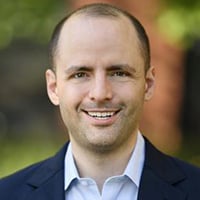How do psychologists determine a diagnosis of PTSD?
PTSD, or post-traumatic stress disorder, is a mental health condition that can develop following exposure to a life-threatening or traumatic event, such as a sexual assault, physical assault, motor vehicle accident or combat. Most people who experience these events do not develop PTSD. However, for those who do develop PTSD, they typically experience distressing and impairing symptoms, such as nightmares, difficulty sleeping, unpleasant feelings like guilt and anger and a constant state of being “on guard” for potential ongoing threats. Psychologists and other mental health providers diagnose PTSD through an evidence-based clinical interview.
PTSD and traumatic events often have long recovery periods. Talk about the growth that can come with treatment.
To be clear, many individuals with PTSD experience considerable distress as well as impairments across domains of their life – whether in relationships, work or school – but this does not tell the whole story. Recovery from PTSD is possible. For individuals who have recovered from PTSD, there is frequently a period of sizeable psychological growth. This growth can take many forms, including a greater appreciation for life, an increased focus on values-based living, a broadening of perspectives and an acquisition of new skills to better deal with day-to-day stressors as well as other traumatic events that may arise.
What kinds of coping skills can people develop after experiencing a traumatic event with the right treatment?
We know that psychotherapy and medications can work well to treat PTSD. Examples of trauma-focused psychotherapies include cognitive processing therapy, prolonged exposure and written exposure therapy. These therapies teach a range of skills that generally fall into three buckets. In the first bucket, individuals are taught relaxation strategies, such as paced breathing. In the second bucket, individuals are taught to gradually approach feared memories, feelings and situations that were avoided in the wake of the traumatic event – with the ultimate goal of helping individuals to reclaim their lives. In the third bucket, individuals are taught to recognize the interconnectedness of thoughts, behaviors and feelings and how to think more flexibly and balanced.
If someone isn’t ready to begin PTSD treatment, what are some strategies that could help them feel better?
If you believe you or a loved one may have PTSD, seeking help from a licensed mental health professional is recommended. It is also the case, though, that the decision to begin treatment for PTSD can be very difficult and scary. Treatment may also be inaccessible due to geographical, financial or other barriers. There are free and publicly available self-management tools, which while not a substitute for treatment, can be helpful. One example is the PTSD Coach mobile application, which is available in both English and Spanish. Additionally, leaning on loved ones – friends, family – for social support can be incredibly powerful.
Are certain groups in the United States at increased risk for PTSD relative to other groups?
We know that the prevalence of PTSD is higher among military personnel, including combat-deployed military personnel, compared with the general population. For this reason, one of the psychological health missions of the CU Anschutz Center for Combat Medicine and Battlefield (COMBAT) Research is to develop novel, scalable and evidence-based approaches to prevent the development of PTSD among military service members.
If someone thinks they or a loved one may be experiencing PTSD following a trauma, what should they do?
Mobilize your social support network to stay engaged and connected. Being plugged in with loved ones will generally help to make the process of treatment and recovery easier. It is also important to seek assessment and treatment – psychotherapy and/or medication – from a trained professional, whether a primary care physician, psychologist, social worker or someone else.
Is there anything else you would like to add?
One thing I want to underscore is that it is never too late to seek help. It is not uncommon for people to start PTSD treatment months, years or even decades following a traumatic event or events. The journey to recovery is often non-linear, and there is no one-size-fits-all solution.





